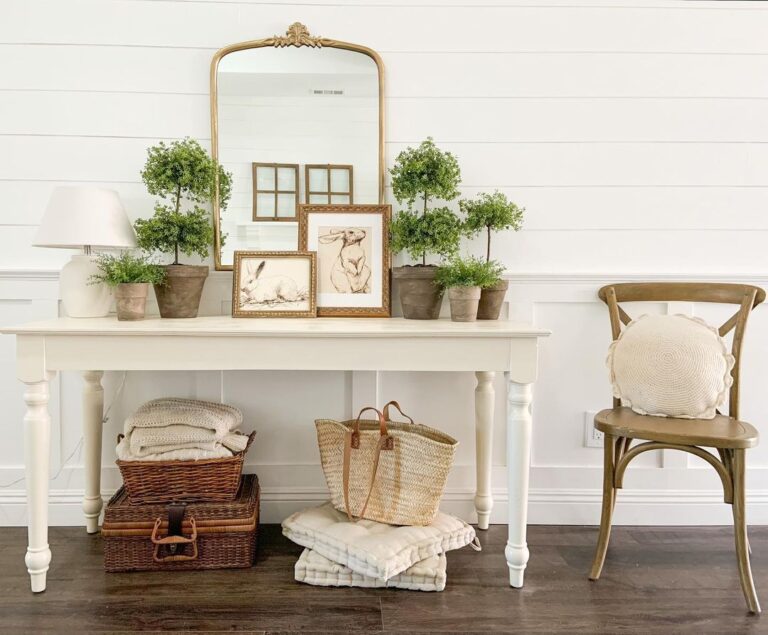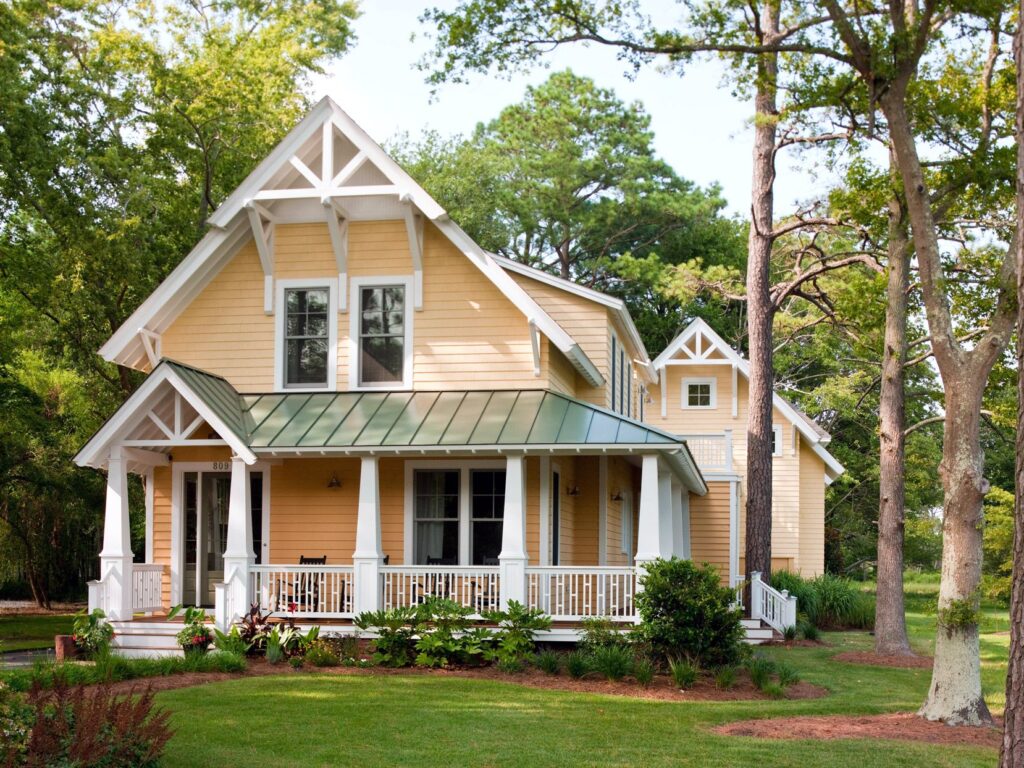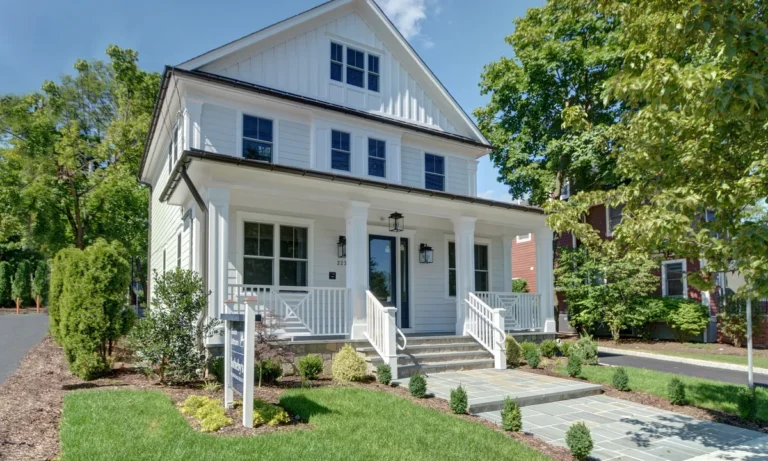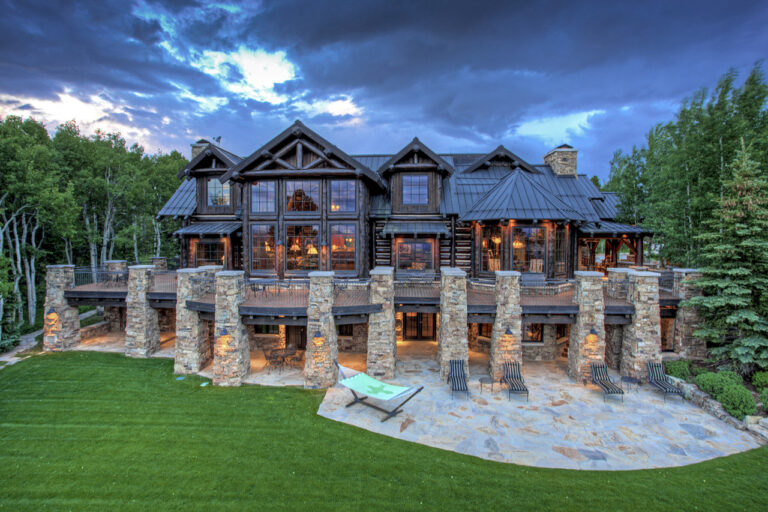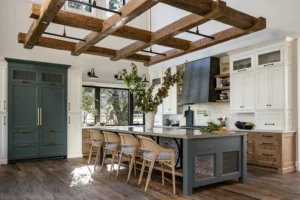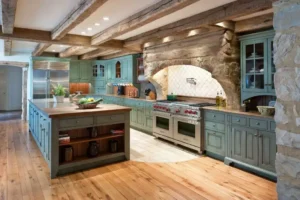Mark stood at his front door, frustrated as he watched water pour off his roof in torrents. His freshly painted house, once pristine, now had streaks of dirt running down the walls. Worse yet, puddles were forming dangerously close to the foundation, threatening to seep into his basement. The storm wasn’t particularly severe, but it was relentless, and his home’s gutters were overwhelmed. As he watched his walls being battered, Mark realized that his house was missing something crucial: properly designed roof eaves.
Years ago, when he had chosen the house, the modern, minimalist design—with its clean, sleek lines—had been too attractive to resist. But now, as the rain pounded down, he began to understand that those long-forgotten, overhanging eaves serve a much greater purpose than mere decoration. They’re a critical part of protecting a home from the elements.
Roof eaves, often overlooked in modern architecture, play a crucial role in safeguarding a home from water damage, maintaining energy efficiency, and even contributing to aesthetic appeal. In this article, we’ll explore the importance of roof eaves, provide key statistics, and explain why homeowners like Mark should ensure their roofs have this often-underappreciated feature.
What Are Roof Eaves?
Roof eaves are the edges of the roof that extend beyond the walls of a building. They typically overhang the exterior walls, providing shade, redirecting rainwater, and protecting the building’s foundation from excess moisture. While the specific design of eaves can vary, they generally serve the same essential functions in both residential and commercial buildings.
The basic components of a roof eave include:
- Soffit: The underside of the eave that encloses the space between the roof’s edge and the building wall.
- Fascia: A horizontal band attached to the end of the rafters, often used to support gutters.
- Gutters: These are not technically part of the eave itself but are often installed along the eave to channel rainwater away from the house.
While eaves have practical applications, their design can also add to a home’s visual appeal, offering both functional and decorative benefits.
The Functional Benefits of Roof Eaves
- Water Protection
One of the primary functions of roof eaves is to protect the structure from water damage. By extending the roofline past the exterior walls, eaves help direct rainwater away from the siding and the foundation of the house.
A report from the Insurance Information Institute indicates that water damage accounts for nearly 29% of all property insurance claims in the U.S., with many cases resulting from improper drainage systems or lack of overhanging eaves [Insurance Information Institute, 2022]. Water that drips directly from the roof onto the walls can cause rot, mould growth, and structural damage over time. Additionally, without eaves, rainwater may pool around the foundation, leading to erosion or even basement flooding.
Properly designed roof eaves, combined with a gutter system, can mitigate this risk significantly, funnelling rainwater into downspouts that safely direct it away from the home’s foundation.
- Energy Efficiency and Climate Control
Eaves also play a vital role in regulating the temperature inside a home. By providing shade, especially in the summer months, eaves can prevent direct sunlight from hitting windows and exterior walls, reducing the amount of heat that enters the home. According to the Department of Energy, well-designed roof overhangs can reduce cooling costs by up to 10% during hot months, depending on the climate and the positioning of the house [Department of Energy, 2021].
In the winter, on the other hand, roof eaves allow sunlight to reach the home’s windows when the sun is lower in the sky, providing natural warmth. This strategic use of eaves to control solar gain is particularly important for energy-efficient homes and can lower the demand for heating and cooling systems.
- Ventilation and Moisture Control
Eaves with vented soffits can improve airflow in the attic space, preventing heat buildup and reducing the risk of moisture accumulation. Proper attic ventilation helps regulate temperature, especially during the summer, when a hot attic can cause discomfort in the living spaces below.
A study by The National Roofing Contractors Association (NRCA) found that adequate attic ventilation, often supported by vented soffits, can extend the life of a roof by up to 25% by preventing excess moisture and heat buildup [NRCA, 2020]. Without proper ventilation, warm, moist air can become trapped, leading to mould growth, wood rot, and ice dam formation during the winter.
Types of Roof Eaves
There are several types of roof eaves, each offering different levels of protection and aesthetic appeal:
- Open Eaves
Open eaves leave the rafters exposed and visible from below. This type of eave is common in traditional and rustic architectural styles and can add character to a building. However, because they expose the roof structure, open eaves may require more maintenance and can be more susceptible to weathering over time.
- Closed Eaves
In contrast, closed eaves have soffits that conceal the rafters, providing a cleaner, more finished appearance. This type of eave is often used in modern and contemporary homes and offers better protection against pests, birds, and the elements.
- Boxed-in Eaves
Boxed-in eaves have a soffit that is installed horizontally, connecting the roof’s edge to the wall in a straight line. This type is often seen in homes with a simple, clean roofline and provides excellent protection from rain and snow.
- Overhanging Eaves
Overhanging eaves extend further than typical eaves, often offering more significant protection against the elements. In homes located in rainy or snowy climates, extended eaves help prevent water and snow from accumulating near the walls, thus reducing the risk of moisture damage.
Why Eaves Are Often Overlooked in Modern Architecture
In recent years, minimalist and modern architectural designs have gained popularity, often featuring homes with little or no roof overhang. These designs, characterized by clean lines and flat roofs, prioritize aesthetics over function. However, this trend can have downsides, particularly in climates where rain and snow are common.
A report from the American Institute of Architects noted that homes built with minimal eaves in regions with high rainfall often suffer from increased water damage and require more frequent maintenance, as compared to homes with traditional overhanging eaves [AIA, 2022]. While the sleek look of a flat roof may appeal to some, the lack of eaves can cause long-term issues that ultimately cost homeowners more in repairs and energy bills.
How to Maintain Roof Eaves
While roof eaves offer numerous benefits, they require regular maintenance to continue functioning effectively:
- Inspect the Soffits and Fascia: Every few months, check the soffits and fascia for signs of rot, cracks, or pest damage. Replace any damaged sections promptly to prevent further issues.
- Clear the Gutters: Ensure that the gutters installed along the eaves are clear of debris. Clogged gutters can cause water to overflow, damaging both the roof and the walls of your home.
- Check for Water Damage: Look for water stains or signs of water intrusion around the eaves after heavy rain. If water is getting through, it may be a sign that the eaves or roof needs repairs.
According to HomeAdvisor, the average cost of repairing roof eaves ranges from $600 to $1,200, depending on the extent of the damage and the type of materials used [HomeAdvisor, 2023]. Regular maintenance can avoid costly repairs and extend the life of the roof.
Conclusion: The Overlooked Importance of Roof Eaves
As Mark learned during that unexpected rainstorm, roof eaves are far more than an aesthetic feature. They play a critical role in protecting a home from water damage, regulating temperature, and even contributing to the longevity of the roof. From water protection to energy savings, properly designed eaves can save homeowners significant costs over time.
For those building a new home or considering a renovation, taking the time to understand the functional benefits of eaves can be the difference between a house that withstands the elements and one that requires constant repairs. As with any part of a home’s design, balancing form and function is key—and when it comes to roof eaves, function should never be overlooked.
You may also read
Cape Town South Africa Homes for sale


